Related Research Articles

Jean Sibelius was a Finnish composer of the late Romantic and early modern periods. He is widely regarded as his country's greatest composer, and his music is often credited with having helped Finland develop a stronger national identity when the country was struggling from several attempts at Russification in the late 19th century.

The Sibelius Academy is part of the University of the Arts Helsinki and a university-level music school which operates in Helsinki and Kuopio, Finland. It also has an adult education centre in Järvenpää and a training centre in Seinäjoki. The Academy is the only music university in Finland. It is among the biggest European music universities with roughly 1,400 enrolled students.
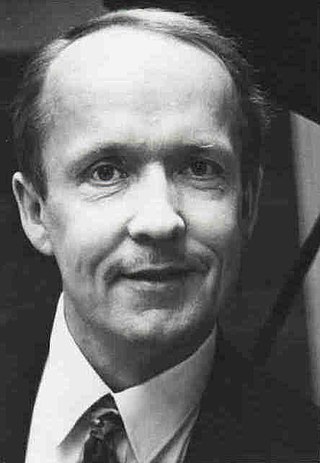
Eero Aarne Pekka Tarasti is a Finnish musicologist and semiotician, currently serving as Professor Emeritus of Musicology at the University of Helsinki. He has contributed significantly to the semiotics of music.
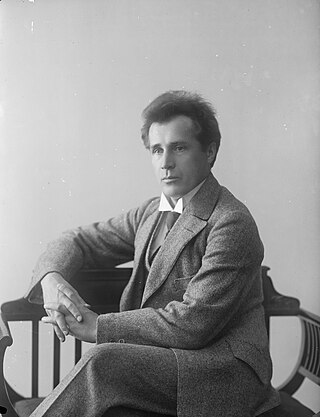
Leevi Antti Madetoja was a Finnish composer, music critic, conductor, and teacher of the late-Romantic and early-modern periods. He is widely recognized as one of the most significant Finnish contemporaries of Jean Sibelius, under whom he studied privately from 1908 to 1910.
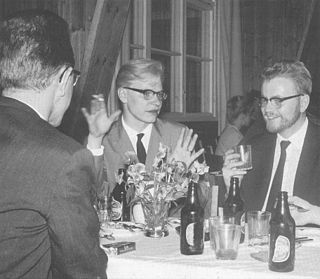
Erkki Olavi Salmenhaara was a Finnish composer and musicologist.

Kullervo, Op. 7, is a five-movement symphonic work for soprano, baritone, male choir, and orchestra written from 1891–1892 by the Finnish composer Jean Sibelius. Movements I, II, and IV are instrumental, whereas III and V feature sung text from Runos XXXV–VI of the Kalevala, Finland's national epic. The piece tells the story of the tragic hero Kullervo, with each movement depicting an episode from his ill-fated life: first, an introduction that establishes the psychology of the titular character; second, a haunting "lullaby with variations" that portrays his unhappy childhood; third, a dramatic dialogue between soloists and chorus in which the hero unknowingly seduces his long-lost sister; fourth, a lively scherzo in which Kullervo seeks redemption on the battlefield; and fifth, a funereal choral finale in which he returns to the spot of his incestuous crime and, guilt-ridden, takes his life by falling on his sword.
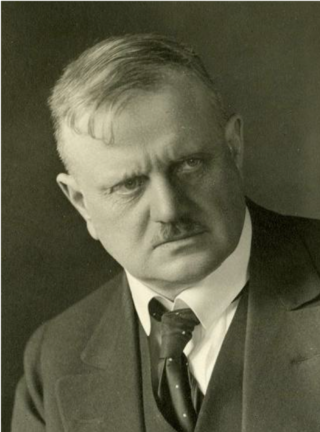
The Oceanides, Op. 73, is a single-movement tone poem for orchestra written from 1913 to 1914 by the Finnish composer Jean Sibelius. The piece, which refers to the nymphs in Greek mythology who inhabited the Mediterranean Sea, premiered on 4 June 1914 at the Norfolk Music Festival in Connecticut with Sibelius conducting. Praised upon its premiere as "the finest evocation of the sea ... ever ... produced in music", the tone poem, in D major, consists of two subjects, said to represent the playful activity of the nymphs and the majesty of the ocean, respectively. Sibelius gradually develops this material over three informal stages: first, a placid ocean; second, a gathering storm; and third, a thunderous wave-crash climax. As the tempest subsides, a final chord sounds, symbolizing the mighty power and limitless expanse of the sea.

The Building of the Boat was a projected Wagnerian opera for soloists, choir, and orchestra that occupied the Finnish composer Jean Sibelius from 8 July 1893 to late-August 1894, at which point he abandoned the project. The piece was to have been a collaboration with the Finnish author J. H. Erkko, whose libretto adapted Runos VIII and XVI of the Kalevala, Finland's national epic. In the story, the wizard Väinämöinen tries to seduce the moon goddess Kuutar by building a boat with magic; his incantation is missing three words, and he journeys to the underworld of Tuonela to obtain them. In July 1894, Sibelius attended Wagner festivals in Bayreuth and Munich. His enthusiasm for his own opera project waned as his attitude towards the German master turned ambivalent and, then, decisively hostile. Instead, Sibelius began to identify as a "tone painter" in the Lisztian mold.
Matti Juhani Raekallio is a Finnish pianist.

The Maiden in the Tower, JS 101, is an opera in one act—comprising an overture and eight scenes—written in 1896 by the Finnish composer Jean Sibelius. The piece was a collaboration with the Finnish author Rafael Hertzberg, the Swedish-language libretto of whom tells a "simple tale of chivalry" that may nonetheless have had allegorical ambitions: the Bailiff abducts and imprisons the Maiden ; although she endures hardship, she remains true to herself and is freed subsequently by her Lover and the Chatelaine of the castle.
The Austrian-Taiwanese pianist and pedagogue Heinz Chen was artistic director of the Beigang International Music Festival between 2006 and 2009. Today he lives in Berlin, Germany.

Erik Werner Tawaststjerna was a Finnish musicologist who also worked as a pianist, pedagogue, and critic. He is remembered as a significant biographer of Jean Sibelius.
Risto Vilho Johannes Lauriala is a Finnish classical pianist.

The Wood Nymph, Op. 15, is a programmatic tone poem for orchestra composed in 1894 and 1895 by the Finnish composer Jean Sibelius. The ballade, which premiered on 17 April 1895 in Helsinki, Finland, with Sibelius conducting, follows the Swedish writer Viktor Rydberg's 1882 poem of the same title, in which a young man, Björn, wanders into the forest and is seduced and driven to despair by a skogsrå, or wood nymph. Organizationally, the tone poem consists of four informal sections, each of which corresponds to one of the poem's four stanzas and evokes the mood of a particular episode: first, heroic vigor; second, frenetic activity; third, sensual love; and fourth, inconsolable grief.

The Dryad, Op. 45/1, is a tone poem for orchestra written in 1910 by the Finnish composer Jean Sibelius. He completed it between skiing trips. He conducted the first performance in Kristiania, Norway, on 8 October 1910, together with the premiere of In memoriam. He arranged it for piano in 1910. The piece has been regarded as one of the composer's "shortest and most original orchestral works", as an "impressionist miniature", proceeding from fragments to a "dance-like theme".
Uki Lauri Aleksi Ovaskainen is a Finnish pianist.
Tuomas Turriago is a Finnish composer, pianist and conductor. Since 2004 Turriago has served as senior lecturer in accompaniment at Tampere University of Applied Sciences. He is recognized as the first Finnish composer to record his entire piano oeuvre.
Henri Sigfridsson is a Finnish classical pianist.
Janne Juhani Mertanen is a Finnish classical pianist. He has studied at the Joensuu Conservatory under Matti Haapasalo and at the Sibelius Academy as a student of, among others, Erik T. Tawaststjerna. The pianist, who specializes in Chopin, made his debut at London's Wigmore Hall with a Chopin program in 1994.
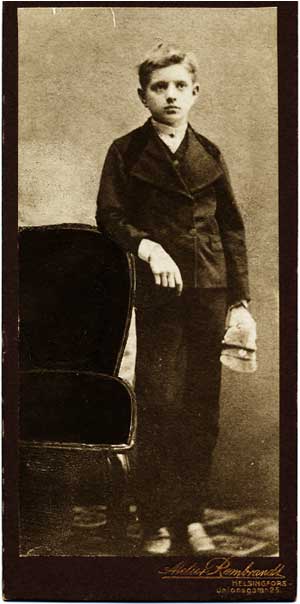
Water Droplets, JS 216, is a chamber piece for violin and cello pizzicato written by the Finnish composer Jean Sibelius when he was a schoolboy. The "tiny piece", which is just 12 measures long, cannot be dated with precision, because the autograph manuscript is lost. Scholars nevertheless speculate that Sibelius wrote the duo sometime between 1875 and—more likely—1881. Regardless, Water Droplets retains a degree of historical significance as Sibelius's earliest written work. Fazer Music published the piece in 1997. A typical performance lasts 45 seconds.
References
- 1 2 "Prof. Erik Thomas Tawaststjerna". German Piano Open. Retrieved 8 June 2021.
- ↑ Hilton Head International Piano Competition
- ↑ "BIS Records - Tawaststjerna, Erik T".